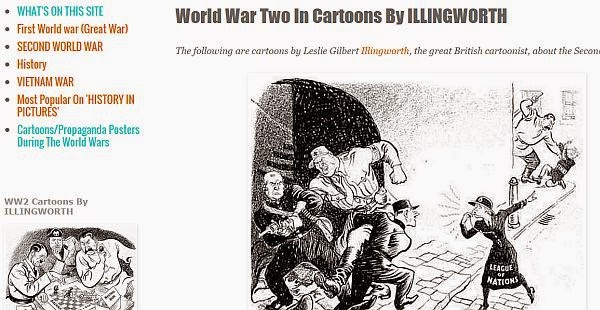Poster is an example of realistic art - a glimpse of generalized reality splashed onto a sheet of paper. It is laconic, dynamic and easy to understand, omnipresent and decorative. It's both a chronicler and a powerful tool of monumental propaganda. Political poster played a great role in the anti-fascist struggle. Poster art developed rapidly during the war, giving rise to new forms of expression.
The posters of 1941-1945 exerted profound influence on the development of this branch of pictorial propaganda. War-time posters are very emotional, psychologically sharp, full of pathetic wrath. They focus on man rather than symbols. To enhance the emotional message, a human figure is usually placed in the foreground. It's a lyrical story about living heroes. No symbol can compare by its ideological influence with the image of an attacking soldier or the image of the Motherland - a woman 0with a stern face and anxious look, stretching out the text of a military oath. Often a poster was created by means of generalizing a certain prototype.
Soviet posterists such as V. Ivanov, A. Kokorekin, V. Koretsky, I. Toidze, D. Shmarinov, P. Sokolov-Skalya, V. Deni and the Kukryniks team left behind vivid images showing the unbending will of Soviet (Read that as Russian) people who stood up staunchly for their Motherland.

In the early hours of June 22, 1941, Nazi troops invaded the Soviet Union without declaring war. That was the beginning of the Great Patriotic War waged by the Soviet people ( Read that as Russians) for their freedom and independence.


On September 30, 1941, Hitler ordered his troops to attack Moscow. The great victory won by the Russian Army in the battle for Moscow was the first major turning point during the first year of the war.

In January 1942 the Soviet Army launched a powerful counter-offensive in several strategic directions of the Soviet-German front.


February 1943 saw the crushing defeat of Nazi troops near Stalingrad.
Troops of the Don Front successfully destroyed the Nazi forces surrounded near Stalingrad.


1943 - a hard-fought victory in the Kursk Bulge, one of WW2 biggest battles.
 In 1944 the Soviet Army mounted counter-offensives near Leningrad and Novgorod.
In 1944 the Soviet Army mounted counter-offensives near Leningrad and Novgorod.

In the summer of 1944 the Soviet Army began its advance into Poland, the Baltic republics and Eastern Prussia.



On May 8, 1945, the German government signed a pact on unconditional surrender. On May 9 Soviet troops crushed the remainder of Nazi forces near Prague. May 9 was officially proclaimed Victory Day.

The posters of 1941-1945 exerted profound influence on the development of this branch of pictorial propaganda. War-time posters are very emotional, psychologically sharp, full of pathetic wrath. They focus on man rather than symbols. To enhance the emotional message, a human figure is usually placed in the foreground. It's a lyrical story about living heroes. No symbol can compare by its ideological influence with the image of an attacking soldier or the image of the Motherland - a woman 0with a stern face and anxious look, stretching out the text of a military oath. Often a poster was created by means of generalizing a certain prototype.
Soviet posterists such as V. Ivanov, A. Kokorekin, V. Koretsky, I. Toidze, D. Shmarinov, P. Sokolov-Skalya, V. Deni and the Kukryniks team left behind vivid images showing the unbending will of Soviet (Read that as Russian) people who stood up staunchly for their Motherland.

In the early hours of June 22, 1941, Nazi troops invaded the Soviet Union without declaring war. That was the beginning of the Great Patriotic War waged by the Soviet people ( Read that as Russians) for their freedom and independence.


On September 30, 1941, Hitler ordered his troops to attack Moscow. The great victory won by the Russian Army in the battle for Moscow was the first major turning point during the first year of the war.

In January 1942 the Soviet Army launched a powerful counter-offensive in several strategic directions of the Soviet-German front.


February 1943 saw the crushing defeat of Nazi troops near Stalingrad.
Troops of the Don Front successfully destroyed the Nazi forces surrounded near Stalingrad.


1943 - a hard-fought victory in the Kursk Bulge, one of WW2 biggest battles.
 In 1944 the Soviet Army mounted counter-offensives near Leningrad and Novgorod.
In 1944 the Soviet Army mounted counter-offensives near Leningrad and Novgorod.
In the summer of 1944 the Soviet Army began its advance into Poland, the Baltic republics and Eastern Prussia.



On May 8, 1945, the German government signed a pact on unconditional surrender. On May 9 Soviet troops crushed the remainder of Nazi forces near Prague. May 9 was officially proclaimed Victory Day.
















































